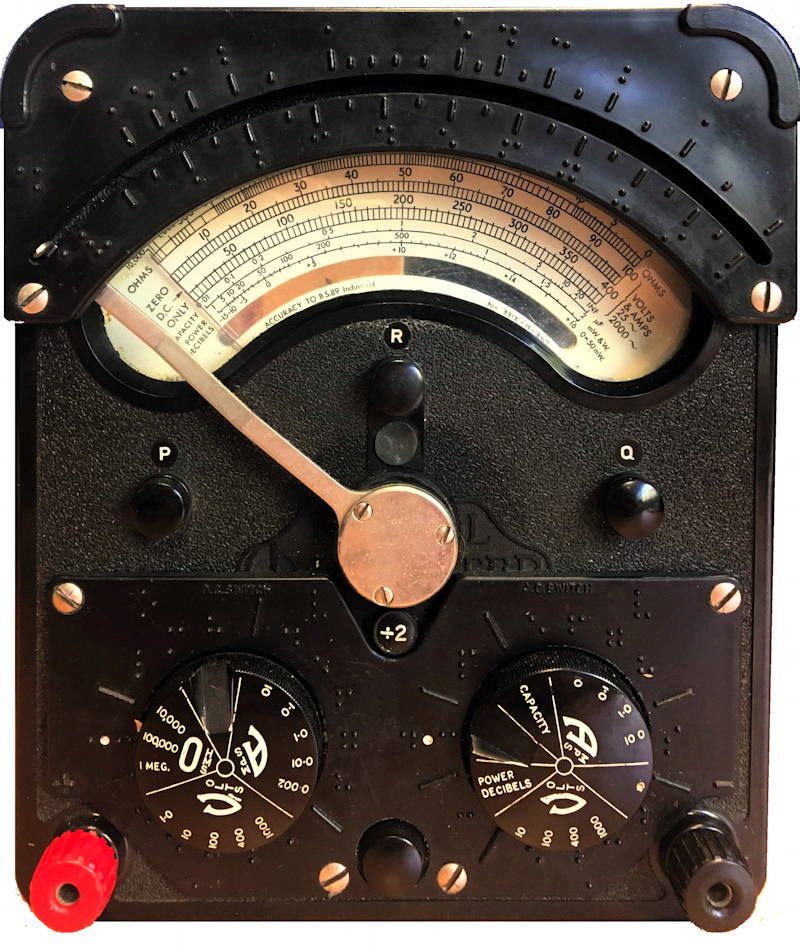The AVO 7 and 8 Brail models struck me as a very nice touch for blind or partially sighted engineers, but the thought of working on 1950s era electrics (the AVO 7s had 1mA movements) and electronics would probably be seen as a health and safety nightmare today. Presumably many would have been used in more controlled environments like factory equipment alignment. I don't know.

WOW!


A Brail model, introduced in 1951. That's amazing!
These days, many (me included), would never think an old mechanical analogue movement meter, from 1951 onwards, would be able to be read in Brail. Someone may think it would need a significant development team, powerful (MCU) computing abilities. Especially to handle the reading to spoken voice conversion. And/or complicated electro-mechanical workings, to create the (what looks like) complicated bump patterns, depending on the voltage level. Also, doing it using just a milliamp, or so.
Very good point about the safety aspects. I think (I'm not 100% sure, by any means), there were a lot of people, involved in electronics, in the 1950s. Repair shop round every street corner. Home users changing their own worn out valves (tubes), in Radios and TVs. People going round with carts, full of type A and type B (rusty memories, of what I was told about the old days) batteries. Which were lead acid and had been recharged. One for the high voltage (high tension), the other (B ?), for the 6.3V filaments. I could easily be wrong about the technical terms, A & B etc, as I said, rusty memories of what I was told.
Possibly, one type (H.T. ??), didn't need so frequent replacement and was a large dry battery, perhaps 90V, whereas the filament batteries needed weekly replacement with charged ones).
As you said. It was probably to give work to partially sighted or blind people, on a low voltage production line. Checking for open/closed filaments in valves/bulbs or checking the value of resistors, and marking them. Which might not of been automated, a very long time ago. Reportedly when they had 20% tolerance (scarlet or salmon coloured tolerance band ??), carbon resistors, as the values were virtually random, after production. So, 20% +/-, allowed all resistors to be classed as some kind of useable value, rather than choosing the values, to a fair extent, like today's typical product lines.
Thanks for the suggestions on possible cute ones. I'm amazed at the pictures inside those old AVO meters. They seem amazingly complicated inside. I was impressed with the cut-out versions, which is nice to protect the meter. It's a nice action, when it (I believe) magnetically pops out and disconnects, if it is overloaded.
[Start of sarcasm] Things are
SO much better these days. We just have to replace a cheap

high rupture current fuse, rather than have to go to the physical effort of having to push back in a nice cut out. How horrible that must have been, the fuses are only £12 (price varies) a pop, and I'm so pleased when that happens.
